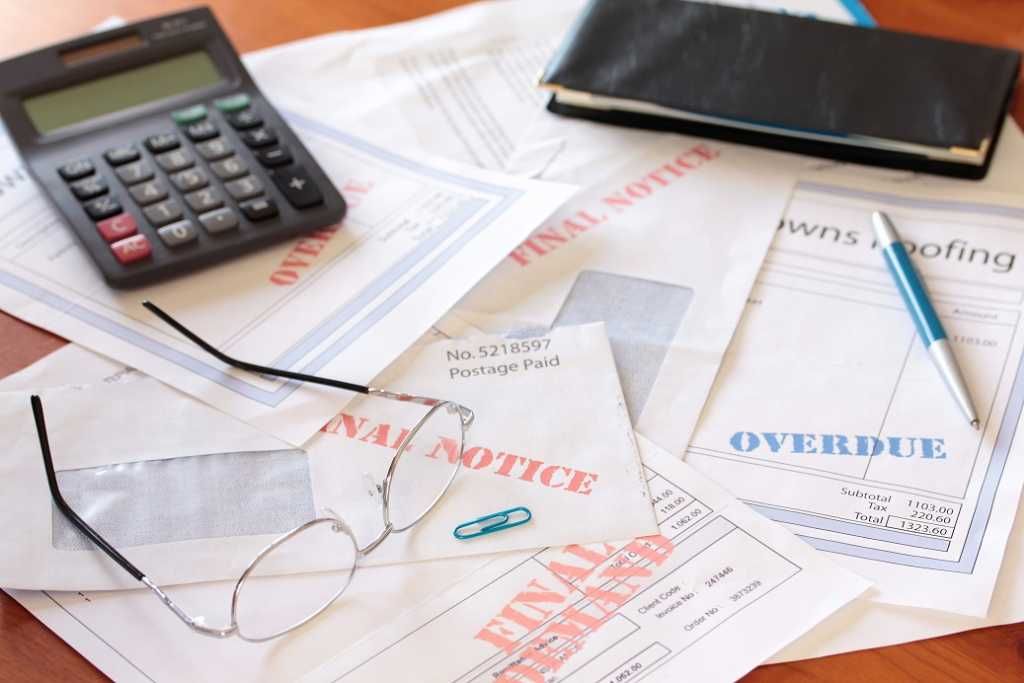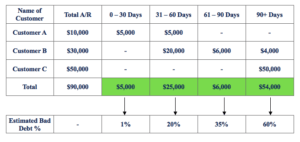Kinh Nghiệm về Which of the following may not be an acceptable method of computing for doubtful accounts to be charged to profit or loss? Chi Tiết
Bùi Thị Vân Thiện đang tìm kiếm từ khóa Which of the following may not be an acceptable method of computing for doubtful accounts to be charged to profit or loss? được Cập Nhật vào lúc : 2022-09-28 08:00:23 . Với phương châm chia sẻ Bí kíp Hướng dẫn trong nội dung bài viết một cách Chi Tiết Mới Nhất. Nếu sau khi đọc tài liệu vẫn ko hiểu thì hoàn toàn có thể lại Comment ở cuối bài để Tác giả lý giải và hướng dẫn lại nha.The amount of accounts receivable that a company does not expect to collect
Nội dung chính- What is the Allowance for Doubtful Accounts?Purpose of the AllowanceExample of Allowance for Doubtful AccountsExample of Writing off an AccountExample of Recovering an AccountEstimating the Amount of Allowance for Doubtful AccountsRelated ReadingWhich of the following methods may be used to estimate doubtful accounts?Which method is not permitted in accounting for bad debts?What 2 methods are commonly used to estimate bad debt expense under the allowance procedure?What are the two methods of accounting for doubtful accounts?
What is the Allowance for Doubtful Accounts?
The allowance for doubtful accounts is a contra-asset account that is associated with accounts receivable and serves to reflect the true value of accounts receivable. The amount represents the estimated value of accounts receivable that a company does not expect to receive payment for.

Purpose of the Allowance
For example, say a company lists 100 customers who purchase on credit and the total amount owed is $1,000,000. The $1,000,000 will be reported on the balance sheet as accounts receivable. The purpose of the allowance for doubtful accounts is to estimate how many customers out of the 100 will not pay the full amount they owe. Rather than waiting to see exactly how payments work out, the company will debit a bad debt expense and credit allowance for doubtful accounts.
Example of Allowance for Doubtful Accounts
Using the example above, let’s say that a company reports an accounts receivable debit balance of $1,000,000 on June 30. The company anticipates that some customers will not be able to pay the full amount and estimates that $50,000 will not be converted to cash. Additionally, the allowance for doubtful accounts in June starts with a balance of zero.
To account for the estimated $50,000 that will not be converted to cash:
Date Account Title Debit Credit June 30, 2022 Bad Debts Expense $50,000 Allowance for Doubtful Accounts $50,000With the account reporting a credit balance of $50,000, the balance sheet will report a net amount of $9,950,000 for accounts receivable. This amount is referred to as the net realizable value of the accounts receivable – the amount that is likely to be turned into cash. The debit to bad debts expense would report credit losses of $50,000 on the company’s June income statement.
Above, we assumed that the allowance for doubtful accounts began with a balance of zero. If, instead, the allowance for uncollectible accounts began with a balance of $10,000 in June, we would make the following adjusting entry instead:
$50,000 – $10,000 = $40,000 (adjusting entry)
Date Account Title Debit Credit June 30, 2022 Bad Debts Expense $40,000 Allowance for Doubtful Accounts $40,000Example of Writing off an Account
Later, a customer who purchased goods totaling $10,000 on June 25 informed the company on August 3 that it already filed for bankruptcy and would not be able to pay the amount owed. The company would then write off the customer’s account balance of $10,000.
To write off the customer’s account balance of $10,000:
Date Account Title Debit Credit Aug. 3, 2022 Allowance for Doubtful Accounts $10,000 Accounts Receivable $10,000After writing off the bad account, the net amount for accounts receivable remains the same: $9,950,000 ($9,990,000 – $40,000). In addition, the bad debt expense remains the same and is not affected by the write-off. The bad debt expense recorded on June 30 already anticipated a credit loss.
Example of Recovering an Account
The customer who filed for bankruptcy on August 3 manages to pay the company back the amount owed on September 10. The company would then reinstate the account that was initially written off on August 3.
To reverse the write-off:
Date Account Title Debit Credit Sept. 10, 2022 Accounts Receivable $10,000 Allowance for Doubtful Accounts $10,000To record the amount paid to the company from the customer:
Date Account Title Debit Credit Sept. 10, 2022 Cash $10,000 Accounts Receivable $10,000Estimating the Amount of Allowance for Doubtful Accounts
In the example above, we estimated an arbitrary number for the allowance for doubtful accounts. There are two primary methods for estimating the amount of accounts receivable that are not expected to be converted into cash.
1. Percentage of Credit SalesThe percentage of credit sales method is explained as follows: If a company and the industry reported a long-run average of 2% of credit sales being uncollectible, the company would enter 2% of each period’s credit sales as a debit to bad debts expense and a credit to allowance for doubtful accounts.
2. Accounts Receivable AgingThe accounts receivable aging method is a report that lists unpaid customer invoices by date ranges and applies a rate of default to each date range.
Example of an accounts receivable aging chart:

To calculate the allowance for doubtful accounts:
($5000 x 1%) + ($25,000 x 20%) + ($6,000 x 35%) + ($54,000 x 60%) = $39,550
If we assume that the allowance for uncollectible accounts showed a credit balance of $5,000 before adjustment, we will make the following adjusting entry:
$39,550 – $5,000 = $34,550 (adjusting entry)
Date Account Title Debit Credit Dec. 31, 2022 Bad Debts Expense $34,550 Allowance for Doubtful Accounts $34,550Related Reading
Thank you for reading CFI’s guide to Allowance for Doubtful Accounts. In order to help you become a world-class financial analyst and advance your career to your fullest potential, these additional resources will be very helpful:
- Cost of DebtDistressed DebtFinancial Modeling GuideFinancial Analyst Designation
Which of the following methods may be used to estimate doubtful accounts?
The percentage of sales method and the accounts receivable aging method are the two most common ways to estimate uncollectible accounts.Which method is not permitted in accounting for bad debts?
Under generally accepted accounting principles (GAAP), the direct write-off method is not an acceptable method of recording bad debts, because it violates the matching principle. For example, assume that a credit transaction occurs in September 2022 and is determined to be uncollectible in February 2022.What 2 methods are commonly used to estimate bad debt expense under the allowance procedure?
Key Takeaways The primary ways of estimating the allowance for bad debt are the sales method and the accounts receivable method.What are the two methods of accounting for doubtful accounts?
¨ Two methods are used in accounting for uncollectible accounts: (1) the Direct Write-off Method and (2) the Allowance Method. § When a specific account is determined to be uncollectible, the loss is charged to Bad Debt Expense. Tải thêm tài liệu liên quan đến nội dung bài viết Which of the following may not be an acceptable method of computing for doubtful accounts to be charged to profit or loss? Cryto Eth